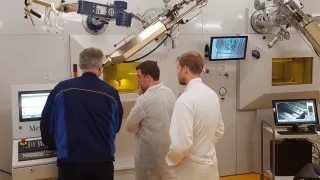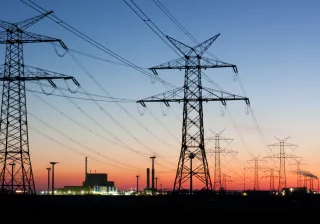Nuclear power generation is a heavily regulated industry. While regulation between countries varies, most regulators demand a Probabilistic Risk Assessment (PRA) or a Probabilistic Safety Assessment (PSA) that investigates the risks associated with the facility and the associated safety measurements. PRA gives nuclear power plant owners and regulators indications on how to reduce and balance such risks.
However, most Probabilistic Risk or Safety Assessment solutions on the market have limited capability to handle time-dependencies in Level 2 PRAs properly. Most current tools for evaluating Level 2 risks are based on static models. This reduces their value in modelling and analysing the dynamic phenomena and severe accident sequences in a facility. How could the challenge be solved?
Let’s begin by clarifying the difference between different PRA/PSA levels. If you are already familiar with them, feel free to jump into the Challenges in the Level 2 PRAs section.
Level 1 PRA and Level 2 PRA – what is the difference?
Probabilistic Risk Assessment helps ensure the safety of a nuclear facility. It identifies the underlying risks and helps to reduce them. For example, it can be used to identify components that need to be replaced or systems or components for which more redundancy is required.
There are three levels to a risk or safety assessment. According to the International Atomic Energy Agency, (IAEA) a Level 1 PRA provides “insights into the strengths and weaknesses of the safety-related systems and procedures in place or envisaged as preventing core damage.” It precedes Level 2, which “provides additional insights into the relative importance of accident prevention and mitigation measures and the physical barriers to the release of radioactive material to the environment”. Level 3 estimates the public health and other societal consequences.
In general, Level 1 PRA analyses accident scenarios preceding nuclear reactor core damage, whereas Level 2 PRA analyses the events after it. The Finnish Radiation and Nuclear Safety Authority STUK categorises the levels as follows:
- Level 1 PRA determines the accident sequences leading to nuclear fuel damage and estimates their probabilities.
- Level 2 PRA assesses the magnitude, probability, and timing of a release of radioactive substances leaking from a nuclear power plant.
The standard methodologies for analysing accident scenarios are event tree diagrams and fault tree analyses. Event trees begin with an initiating event and pinpoint all the subsequent events based on the success or failure of different safety functions.
The challenges of Level 2 Probabilistic Risk Assessments
Severe reactor accidents are dynamic and involve complex physical phenomena. Most Level 2 PRA solutions on the market are based on static methods. These methods are limited in their capacity to model uncertainties and timings related to dynamic accident scenarios.
The timing of an event, like the recovery of a core cooling system, can significantly impact the subsequent accident progression and probabilities of phenomena, like a hydrogen or steam explosion.
Therefore, a major challenge in Level 2 PRA is determining the probabilities of severe accident phenomena and events considering the earlier events and their effects. On the other hand, considering all possible event timings, the number of accident sequences is huge and difficult to manage.
A Level 2 PRA needs to be supported by deterministic analyses that simulate the physical progression of severe accidents. These are typically very time-consuming, so the number of simulations that can be performed is limited.
The use of deterministic analyses in a Level 2 PRA is also cumbersome because they cannot normally be directly integrated with a Level 2 PRA. Overall, a Level 2 PRA and its background analyses are complex to develop and maintain and involve heavy calculations.
Solving the Level 2 PRA challenges with FinPSA
FinPSA is a comprehensive risk and reliability analysis tool for full-scope PRA. VTT Technical Research Centre of Finland develops and maintains the software. FinPSA offers flexible and powerful tools for Level 2 PRA and integration of Levels 1 and 2. FinPSA and its predecessor have been actively used by TVO and STUK since 90s.
How is FinPSA different?
FinPSA uses a script-based approach combined with containment event trees. This is an expressive and agile method for describing dynamics and time dependencies. Event timings can be modelled based on probability distributions, and deterministic computation can be incorporated into FinPSA scripts. All accident scenarios are resolved at once based on probabilistic simulations. The flexible system can be used to meet any needs of the plant owner and regulator.
FinPSA provides several approaches for integrating Level 1 and Level 2: tight, loose, and minimal.
- A tight integration provides traceability from Level 2 PRA releases to Level 1 PRA. Contributions of Level 1 events are seen in Level 2 results. Level 1 PRA information can be used in Level 2 PRA modelling. As a result, the plant owner and the regulator benefit from tracking back the entire chain of events leading to a Level 2 accident, identifying their root causes and determining the actions required to reduce those risks.
- In a loosely coupled integration, the frequencies of Plant Damage States come automatically from Level 1 results. This provides updates from Level 1 to Level 2.
- Alternatively, the user can choose a minimal integration and manually define Level 2 plant damage state frequencies based on Level 1 results. In this way, FinPSA can be used as a standalone tool for Level 2 PRA.
TVO – A real-world example of Level 2 PRA and FinPSA
Teollisuuden Voima Oy (TVO) operates three nuclear plant units in Olkiluoto, Finland. The company has used FinPSA to analyse the risks of their Olkiluoto plants OL1 and OL2, the older units. Soon they will transfer the risk model of the latest unit commissioned for full power production in 2023, Olkiluoto 3 (OL3), to FinPSA.
“The most important thing we’ve discovered with FinPSA is that the units are now well balanced. There are no outstanding chains of events that would pose a major risk. For example, we’ve identified and minimised the risks of hydrogen fires and risks that would damage the barrier structure. Over the last 20 years, various modernisations of the units have greatly reduced core meltdown risks,” says Ari Auvinen, Senior Risk Analysis Engineer at TVO.
According to Auvinen, TVO is using FinPSA as a tool to develop OL1 and OL2. “We are working to increase the output of the units by 10%. As we increase power generation, emission and core meltdown risks increase. At the same time, the regulator demands that we overcompensate for the risks. FinPSA allows us to focus more on perfecting the risk models than running analyses. It enables us to focus on the things that will reduce risks the most – to carry out improvements that minimise real-world risks.”
FinPSA’s Level 2 risk assessment is based on a script-based approach, whereas most PRA software tools only use fault trees. TVO hope to gain even more value from this approach in the future as they expand their customized model to cover the entire reactor building. “We hope to calculate potential emission flows from one room to another and find ways to prevent them, taking into account the direct impact of emissions,” says Auvinen.
We’ve been pleased with FinPSA. It paints an accurate picture of how emissions behave. The development team is easy to contact and responds quickly to our requests. This collaboration is priceless, as sometimes we need to act quickly to keep our regulators happy.
Are you curious about Probabilistic Risk Assessment in the design and operation of nuclear power plants? See FinPSA in action or learn more about VTT’s nuclear safety solutions.








